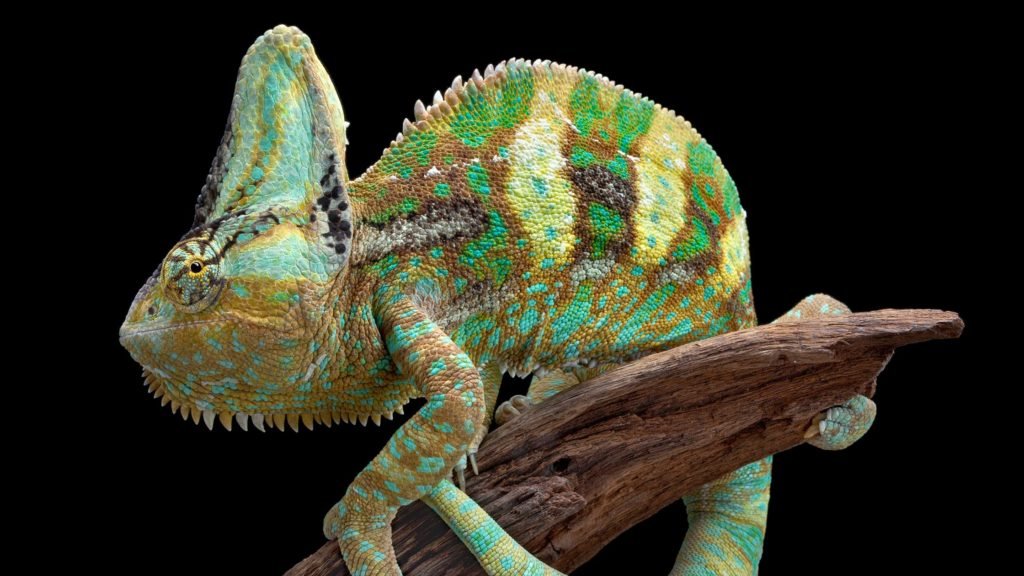Embark on a fascinating exploration of Veiled Chameleons – graceful creatures of nature with a captivating presence. Get ready to uncover their vibrant colors, intriguing behaviors, and the intricacies of caring for these alluring reptiles.
Veiled Chameleon Care
Caring for a Veiled Chameleon is fascinating and gratifying, but it demands patience, effort, and an understanding of their unique and complex environment. As the happy owner of one of these intriguing animals, you must offer a caring and friendly habitat that meets their specific demands. Remember these Veiled Chameleon care essentials.
Enclosure: Your Veiled Chameleon’s habitat should be significant, safe, and well-stocked. Veiled Chameleons are high-altitude chameleons. They lived in lush mountains and valleys. They did not live in arid environments.
Temperature and Humidity: Veiled Chameleons need the proper temperature and humidity. Their habitat should be 75°F–85°F with a 90°F basking place throughout the day. No lower than 65°F at night. Your Veiled Chameleon needs 50%–60% humidity to keep hydrated and comfortable. Your Veiled Chameleon’s terrarium needs a reliable thermometer and hygrometer.
Lighting: Veiled Chameleons require natural and artificial light to get the vitamins and minerals they need to be healthy. They need 10–12 hours of UVB lighting to produce vitamin D3, which regulates calcium metabolism and bone health. They also need a heat lamp-lit basking location.
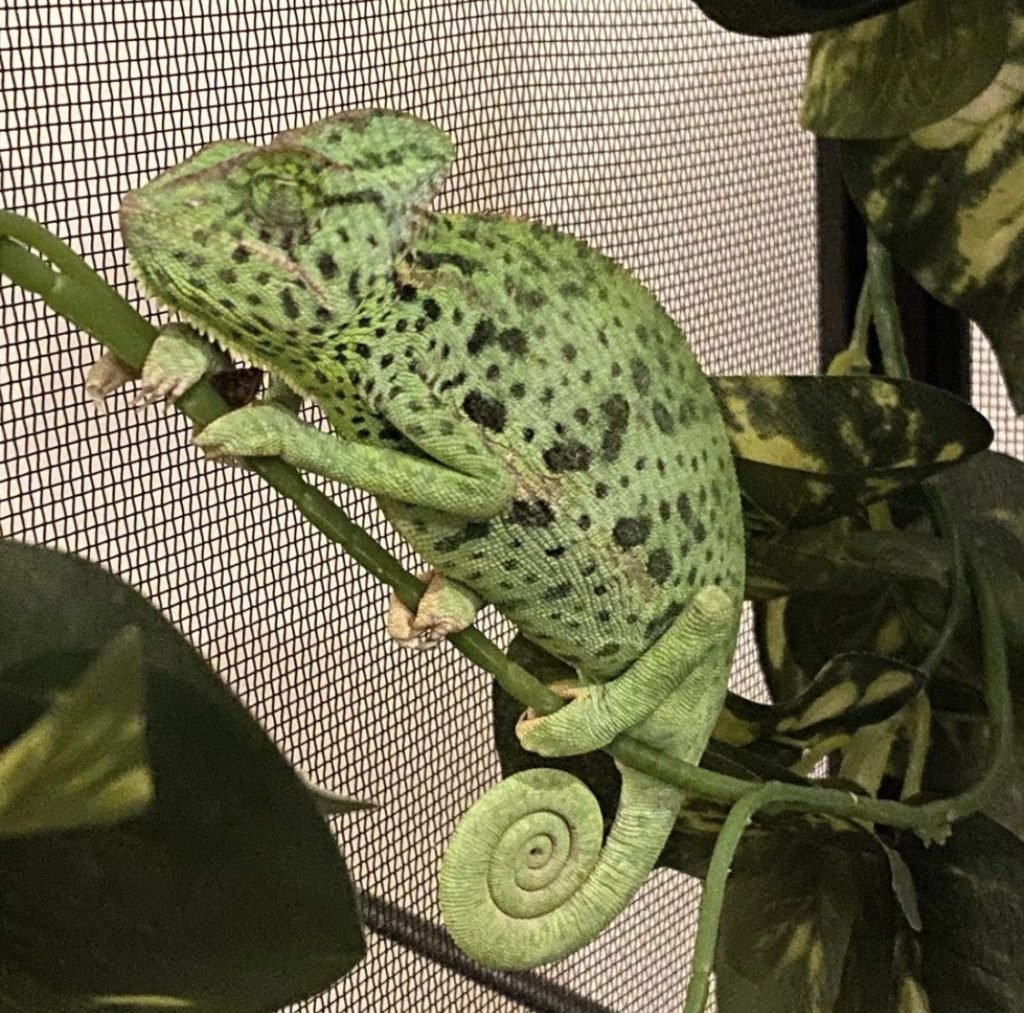
You may also interest: Discover the Different Types of Chameleons as Pets: A Complete Guide
Veiled Chameleons Life Span
Their lifespan is increasing every year we learn more. We are keeping them cooler and feeding them less. A well-cared Veiled Chameleon can live 7–14 years, peaking in their third or fourth year. Veiled Chameleon’s complex and fascinating life requires closer attention and a deep appreciation for its subtleties.
As with every living thing, their longevity depends on their habitat and care. A sterile, unattractive habitat without natural light or proper nutrients might dramatically limit its longevity. In contrast, a caring and pleasant environment can guarantee a long and flourishing life.
Veiled Chameleons Price
The pricing of a Veiled Chameleon reflects our appreciation for these lovely animals and the work involved in caring for them.
You’ll need to put up a lot of time and money to buy a Veiled Chameleon. A healthy, well-bred Veiled Chameleon costs between $50 to $200, depending on age, size, and health.
However, the actual cost of owning a Veiled Chameleon extends far beyond its purchase price. The cost of a large, secure terrarium, a balanced meal, heating, lights, and veterinary care may soon mount up.
Is it a good idea to keep a pair of Veiled Chameleons together?
Definitely No. If chameleons weren’t already fighting, it’d be because one of them had already won. The stress generated by this situation will cause health concerns even when they look fine.
Veiled Chameleons male vs. female
The distinctive and captivating characteristics of male and female Veiled Chameleons distinguish them from one another. Males and females have identical horns and colors, but their behavior and peculiarities distinguish them.
Male Veiled Chameleons:
- Male Veiled Chameleons have a very high casque
- They are noisy and overbearing.
- They were controlling other males in their proximity.
- Males are also highly territorial, fiercely defending their territory from intruders and rivals.
- Their dynamic and energetic behavior is a testament to their vitality.
- The hind spur is a way to recognize the males.
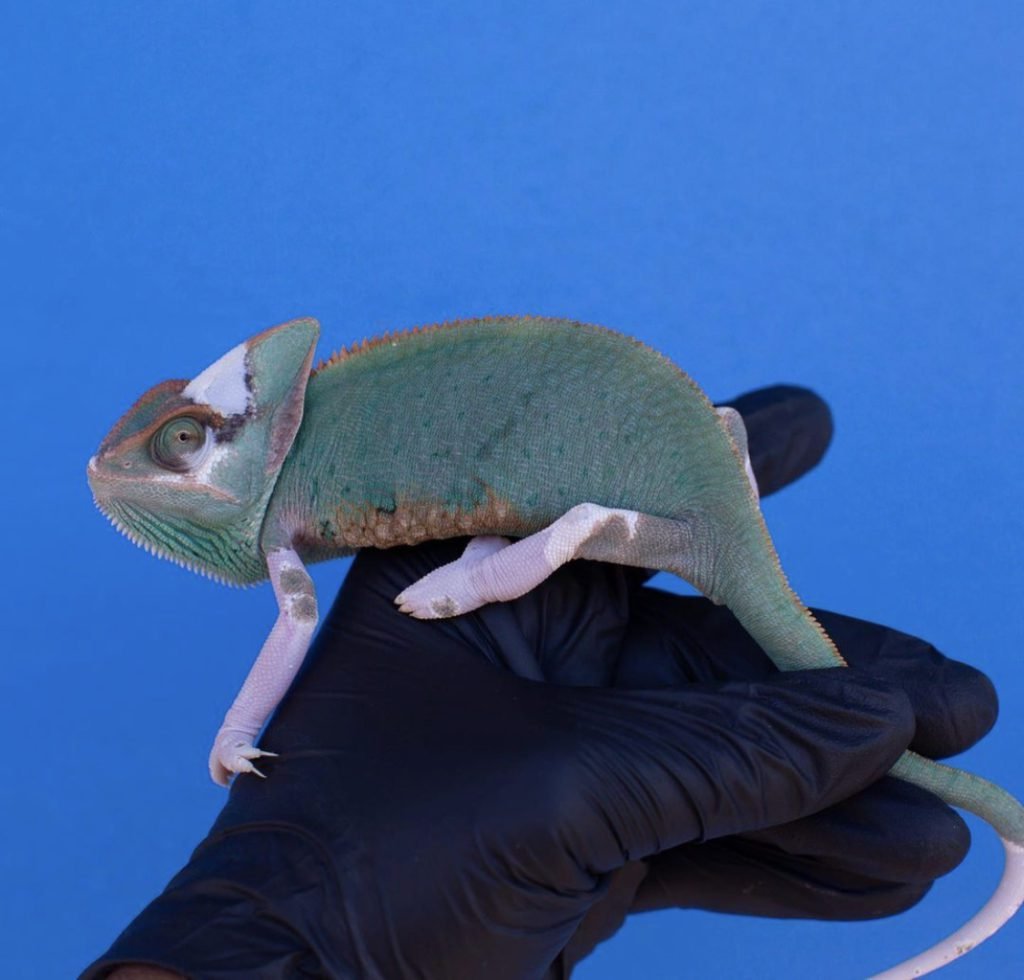
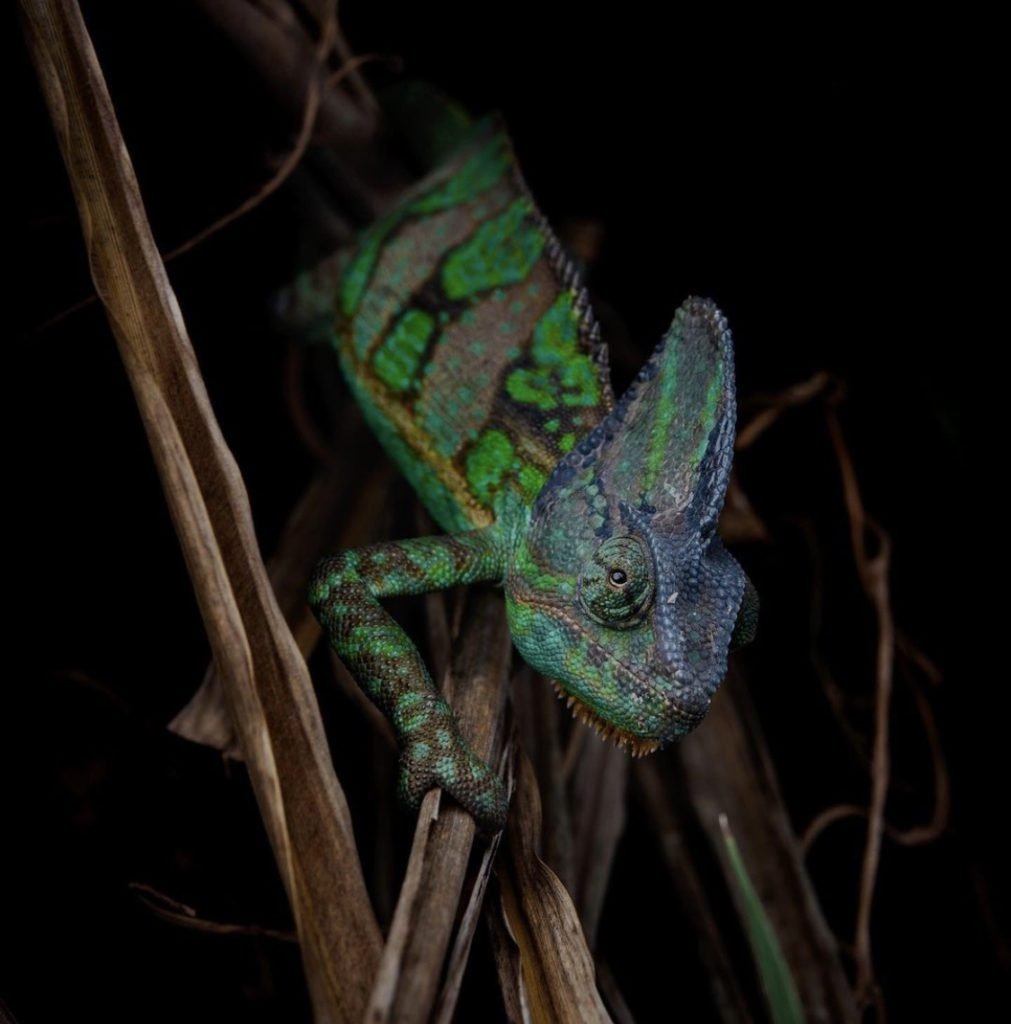
Female Veiled Chameleons:
- Female Veiled Chameleons are often more silent and timid.
- Have a smaller casque up to the top.
- Females are more drably colored, but their gravid colors are incredible.
- They make lovely companions for nature lovers because of their kind and subtle temperament.
How to prepare a female for breeding?
Feed sparsely in the months beforehand, so she is fit and not obese. A week After mating, you’ll know how many eggs to expect, so you can adjust feeding accordingly.
Veiled Chameleon Colors
The colors of a Veiled Chameleon are a mesmerizing kaleidoscope of hues, a celebration of the wondrous beauty of nature. These animals are a symphony of fascinating and enigmatic hues, from their shiny scales to their colorful casque.
At the heart of a Veiled Chameleon’s colors is its ability to change, shift and morph in response to its mood. Veiled Chameleons’ hues reflect their thoughts and feelings, whether they enjoy the sun or hide from predators.
A Veiled Chameleon feeling threatened may display an array of vibrant and warning colors, from deep greens to fiery reds, to deter potential predators. Females sometimes turn black to tell the male that she is not interested.
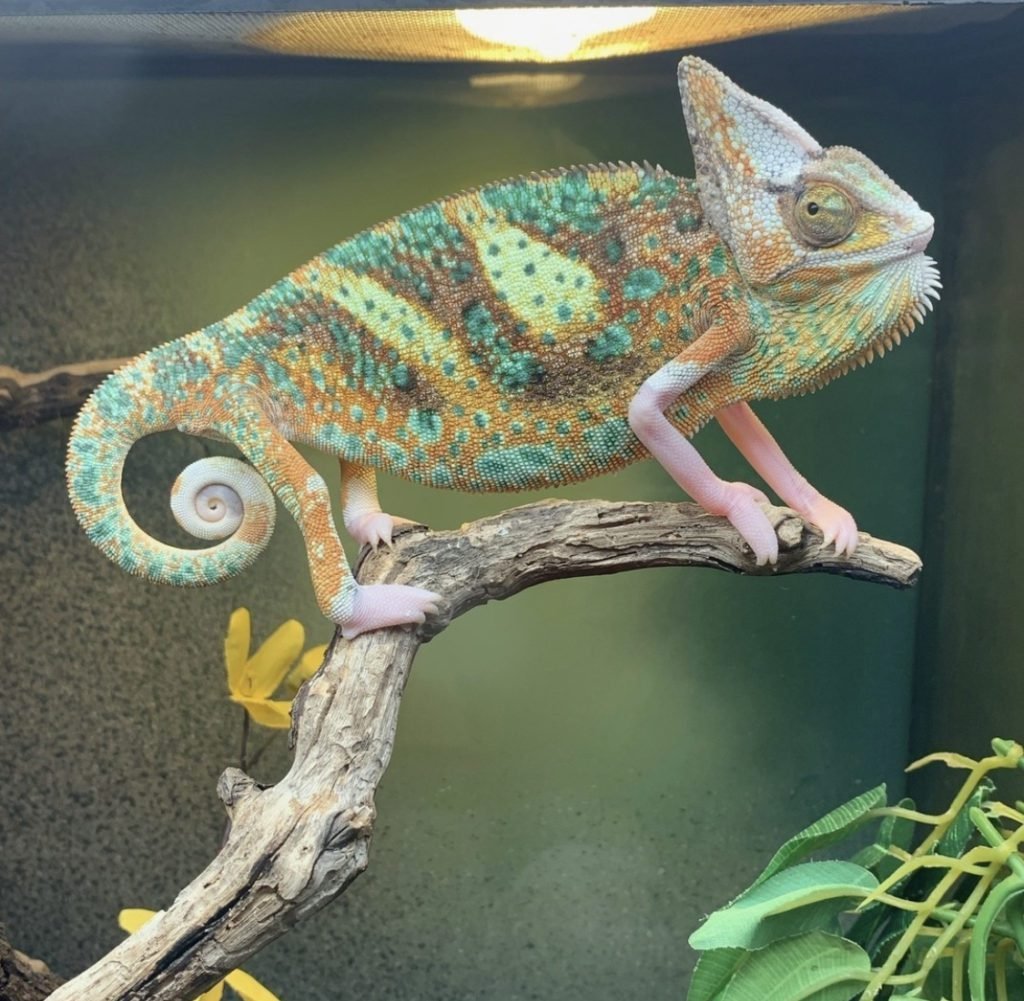
You may also interest: 20 Chameleon Facts: Exploring the Enthralling Chameleon World
Veiled Chameleon Diet
Veiled Chameleons are omnivores and require a balanced diet that includes live insects and fresh fruits and vegetables. Because they are programmed to grow at lightning speed, they have no switch off for feeding. They could become obese. Obesity leads to massive clutches of eggs which could lead to egg bidding death and health concerns. Live insects like crickets, mealworms, and roaches can be sprinkled with calcium to give them the nutrition they need for strong shells and bones. It’s also essential to regularly mist your Veiled Chameleon with water to ensure they stay hydrated.
If my Veiled Chameleon is already fat, why is the best way to slim her back down?
Bring her food intake down from three food items to two daily food items. Don’t do anything drastic. Slowly go towards that schedule.
My Veiled Chameleon loves Watermelon, and is mango sugar from the fruit bad?
Yes, human fruits provide sugar bombs to our taste. This sugar is not healthy for an insectivore reptile. Remember, this chameleon species do not care if it’s good or bad for them; they’ll eat everything.
How often is it recommend dusting insects?
Dust every feeding with a calcium powder without vitamins D3 and A. and then every two weeks with a multivitamin of D3+A with low levels. That assumes a good UVB system providing UVI 3 at basking.
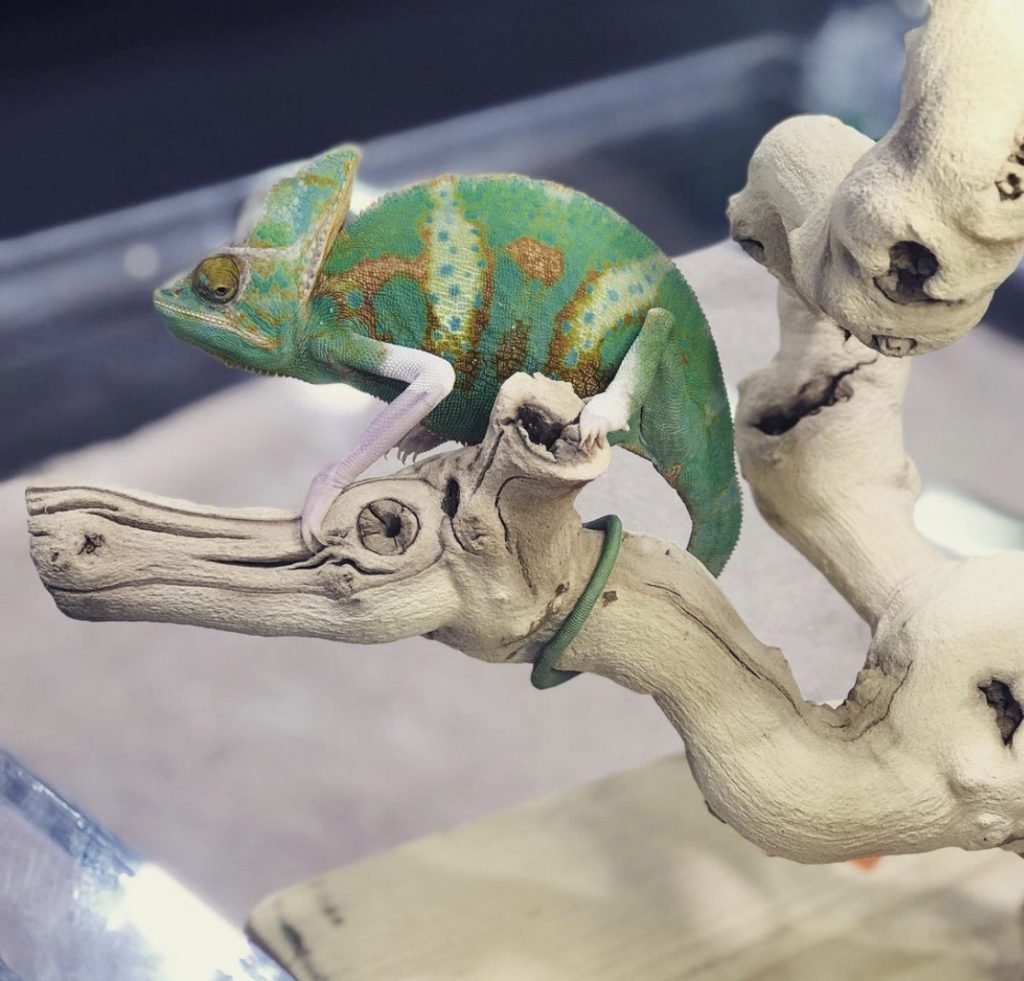
You may also interest: Discovering the Dapper World of Jackson Chameleons: Nature’s Radiant Reptiles
Here are a few facts that are sure to pique your interest:
- Eye-catching eyes: Veiled Chameleons can move each eye independently, allowing them to scan their surroundings in 360 degrees without moving their head. That makes them excellent watchdogs, able to keep an eye on everything happening in their vicinity.
- Tongue-twisters: Veiled Chameleons have a prehensile tongue that is longer than their body! This super-powered tongue allows them to catch their prey from a distance and is a true testament to the marvels of evolution.
- Veiled Chameleons never stop growing. They grow slower when they mature. Generally speaking, they have reached adult size by a year old under the proper care.
- Because they are so simple to reproduce, they are sold and treated exceptionally cheaply.
In conclusion, Veiled Chameleons are truly magnificent creatures that will leave you in awe of their beauty and complexity. From their distinctive colors to their complex care requirements, these chameleons are a delightful addition to any animal lover’s collection. Caring for Veiled Chameleons is rewarding and fascinating whether you’re a chameleon expert or new to exotic pets.

